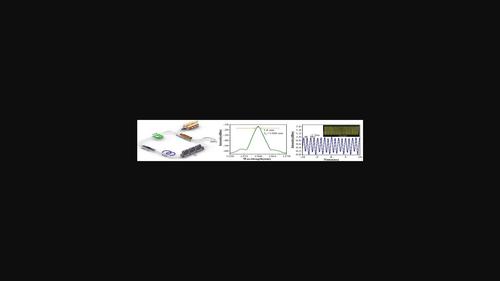基于微纤维基PbS纳米颗粒可饱和吸收体的谐波锁模掺铒光纤激光器
IF 3
4区 材料科学
Q3 CHEMISTRY, PHYSICAL
引用次数: 0
摘要
硫化铅(PbS)是一种具有窄带隙(0.37 eV)、高热损伤阈值、高稳定性等优异光学和化学性能的纳米材料。显然,它适合作为超快光子学的饱和吸收器(SA)器件。然而,PbS纳米粒子作为超短谐波锁模脉冲的SA,目前还没有得到证实。本文采用光沉积法将PbS纳米粒子制成基于sa器件的微光纤,并连接到集成掺铒光纤激光器中。系统地研究了PbS纳米粒子的特性和非线性光学性质。提出了一种基频锁模脉冲激光器,其中心波长为1560 nm,脉宽为1 ps,实现了高重复率操作,最大重复率为833 MHz。这是首次利用PbS NPs产生96阶谐波锁模,其脉冲持续时间为987 fs。结果表明,PbS NPs是一种性能优良的SA光子材料。利用光纤通信可以提高通信容量,在材料加工、光梳等方面都有潜在的应用价值。本文章由计算机程序翻译,如有差异,请以英文原文为准。

Harmonic Mode-Locked Er-Doped Fiber Laser Based on a Microfiber-Based PbS Nanoparticle Saturable Absorber
Lead sulfide (PbS) is a nanomaterial with excellent optical and chemical properties, such as a narrow bandgap (0.37 eV), high thermal damage threshold, and high stability. Obviously, it is appropriate as a saturable absorber (SA) device for ultrafast photonics. However, PbS nanoparticles (NPs) as the SA of ultrashort harmonic mode-locked pulse still haven't been demonstrated at present. In this paper, the PbS NPs are made into an SA-device-based microfiber by optical deposition method and connected in an integrated Erbium-doped fiber laser. And both characteristics and nonlinear optical properties of PbS NPs have been systemically investigated. A fundamental frequency mode-locked pulsed laser is proposed, whose central wavelength is 1560 nm, and the pulse width is 1 ps. In addition, high repetition rate operations are achieved, with a maximum repetition rate of 833 MHz. This is the first time that PbS NPs are used to generate 96th-order harmonic mode-locking, and the corresponding pulse duration is 987 fs. It is demonstrated that PbS NPs are a kind of SA photonic material with excellent performance. It can improve the communication capacity by applying fiber communication, and it has potential application value even in material processing and optical comb.
求助全文
通过发布文献求助,成功后即可免费获取论文全文。
去求助
来源期刊

Particle & Particle Systems Characterization
工程技术-材料科学:表征与测试
CiteScore
5.50
自引率
0.00%
发文量
114
审稿时长
3.0 months
期刊介绍:
Particle & Particle Systems Characterization is an international, peer-reviewed, interdisciplinary journal focusing on all aspects of particle research. The journal joined the Advanced Materials family of journals in 2013. Particle has an impact factor of 4.194 (2018 Journal Impact Factor, Journal Citation Reports (Clarivate Analytics, 2019)).
Topics covered include the synthesis, characterization, and application of particles in a variety of systems and devices.
Particle covers nanotubes, fullerenes, micelles and alloy clusters, organic and inorganic materials, polymers, quantum dots, 2D materials, proteins, and other molecular biological systems.
Particle Systems include those in biomedicine, catalysis, energy-storage materials, environmental science, micro/nano-electromechanical systems, micro/nano-fluidics, molecular electronics, photonics, sensing, and others.
Characterization methods include microscopy, spectroscopy, electrochemical, diffraction, magnetic, and scattering techniques.
 求助内容:
求助内容: 应助结果提醒方式:
应助结果提醒方式:


